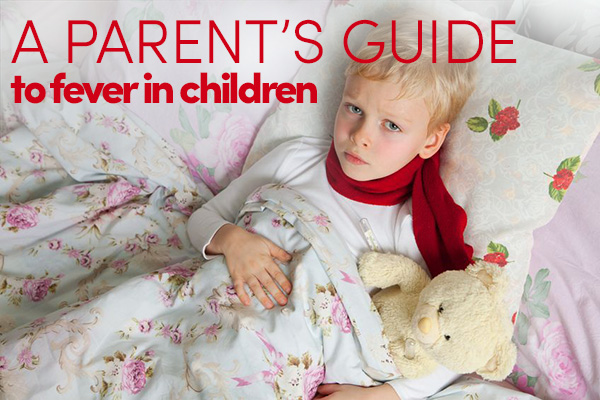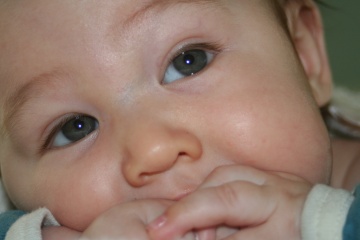
Though often frightening for parents, a fever is one of your child's best defenses against infection. The spikes on the thermometer associated with fevers in children signal that the immune system is working to evict the bad guys. The idea is to let the body do what it's naturally designed to do while making your child as comfortable as possible.
In order to keep your kid as comfy as possible when he's hot, here are a few things to do for fevers in children.
#1 – Make life easy
Try not to read too much into a fever and concentrate on keeping your child comfortable in the most natural way possible. When he feels warm, apply a cold compress. Cover him when he shivers.
#2 – Drink like a fish
Rising body temperature means loss of water, salt and water-soluble nutrients through sweat.
Give your child frequent sips of water, herbal tea like peppermint or chamomile, diluted fruit juices, and natural juice popsicles.
#3 – School's out
Rest is good when your child's body is busy fighting an infection. But, despite high temperature, your child might still be running around and seem normal. This is fine too. Just encourage him to rest as much as possible.
#4 – Starve the fever
This wisdom holds true, but follow your child's lead. Allow him to choose what he wants to eat and when.. from the healthy choices you provide, of course!
Chicken soup is a reliable standard.
#5 – Natural remedies
Caused by nature, fevers should be allowed to recede naturally too. Remedies should aim to ease discomfort from the fever's symptoms.
- Homeopathy: A mild and unobtrusive way of dealing with fever, homeopathic remedies can make your child comfortable while letting the fever run its course.
- Acupuncture: Relieves body aches that accompany a fever.
- Supplements: Vitamin C, echinacea, and Chinese herbal formulas such as Yin Qiao can help your child's body fend off any virus that may be causing the fever.
#6 – Over the counter medicine
Use only as a last resort if your child is extremely uncomfortable.
Ibuprofen is the safest, but use cautiously as it can irritate the stomach. Avoid acetaminophen/Tylenol and aspirin which are commonly linked to liver damage and Reye's syndrome, respectively.
Some danger signs during fevers that warrant an immediate call to your doctor:
- Fever in a baby younger than 3 months old.
- Fevers above 105 degrees Farenheit.
- Brain damage is a concern in fevers above 106 degrees Farenheit.
- Fevers in children lasting more than 3 days.
- Repeated vomiting, severe headache, stiff neck, extreme lethargy, or unresponsiveness.
What to Know About Febrile Seizures
Between 3 – 6 months, children may demonstrate abnormal jerky movements associated with a fever.
Such episodes usually last less than 5 minutes and, though scary for most parents, are no cause for alarm.
Be sure to turn your child on his side and move nearby objects safely out of the way. Otherwise, remain calm and understand that the seizure isn't uncommon with fevers in children and will pass.
What do you do when your child has a fever? Any tips or advice for parents? Share in the comments below!












Peppermint essential oil applied to the bottoms of the feet is a safe way to reduce a fever very quickly. See my blog for more info on alternative remedies for cold and flu.
For older children yes, but NOT FOR INFANTS. Peppermint is a hot oil and is too strong for infants. Lavender is safe and helpful for almost anything infant :)_
Lavender essential oil is a phytoestrogen and should be used sparingly, if at all, especially in little boys, where it can cause hormone imbalance or gynecomastia. Be very careful in using oils on babies and always look up the side effects. I would not suggest using essential oils at all on a baby under 6 months.